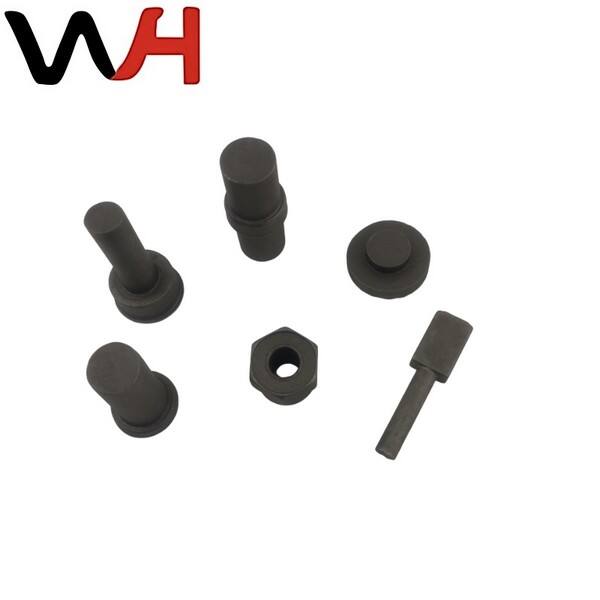Dans ce blog SCEVA, aujourd'hui nous allons discuter de la manière dont nous pouvons fabriquer des pièces à travers un procédé appelé fonderie ! Avez-vous déjà vu quelqu'un verser du métal fondu et brûlant dans un moule spécialement conçu pour cela ? Ils laissent ensuite le métal se refroidir et durcir. La fonderie est le procédé de fabrication de pièces pour de nombreux objets que nous utilisons dans notre vie quotidienne, ce qui en fait un excellent procédé. Il peut s'agir de véhicules, d'avions, de jouets et même de votre bouteille de jus spécialisée dont vous vous servez pour boire.
Mouler des pièces n'est pas une mince affaire, et il y a beaucoup de choses importantes à savoir. La toute première étape pour commencer le moulage est de disposer d'un moule dans lequel vous pouvez verser le métal fondu et liquide. Matériau des moules : Ce moule peut être fabriqué à partir d'une variété de matériaux, tels que du sable ou de l'argile, voire même du métal. Vous devez attendre que le métal fondu refroidisse et se solidifie dans votre moule avant de le retirer. Le refroidissement de ces pièces peut varier de quelques minutes à plusieurs heures, en fonction de la taille et du type de pièce. Retirez la pièce une fois que le métal s'est complètement refroidi et durci. Enfin, vous devrez peut-être prendre quelques mesures supplémentaires après cela : les bords peuvent être lissés et/ou polis pour obtenir une surface brillante.
Il existe plusieurs procédés de fabrication que les gens utilisent lorsqu'ils font des pièces de fonderie. Aux États-Unis, l'un d'eux est la fonderie sur sable où le moule est fait de sable. C'est une méthode de fonderie peu coûteuse et simple. La deuxième méthode est la fonderie par cire perdue où le moule est donné une forme en cire. Avec ce procédé, le métal est laissé refroidir puis le moule en cire (généralement enfermé dans une céramique) est fondu, laissant la pièce. Elles peuvent également être moulées sous pression, où un métal liquide est forcé dans un moule sous haute pression. Cette approche permet également de créer des formes très détaillées. Peu importe la méthode choisie pour votre pièce, l'objet résultant doit ressembler au moule.

Il est important de choisir le bon matériau pour les pièces moulées. La résistance, la dureté et la capacité à résister à la rouille ou à la corrosion peuvent varier en fonction du métal utilisé. L'exemple le plus simple serait si vous concevez une pièce qui doit être solide et durable, alors il se peut qu'elle doive également être fabriquée dans un métal comme l'acier ou le fer. D'un autre côté, peut-être que vous créez une pièce qui transporte de l'eau et devrait être résistante à la rouille - dans ce cas, l'acier inoxydable ou l'aluminium deviennent des options de matériaux. Choisir le bon matériau garantit que votre pièce fonctionnera comme vous en avez besoin.

Un avantage du moulage en série est que parfois, il peut être sensiblement moins coûteux que de fabriquer une seule pièce à la fois. Si vous produisez des pièces en masse, cela économisera de l'argent et du temps ! De plus, vous pouvez produire des pièces ayant des géométries et des caractéristiques complexes avec le moulage, ce qui n'est pas possible avec d'autres méthodes comme l'usinage. Mais il y a également quelques inconvénients à prendre en compte. Par exemple, si le moule présente un défaut, toutes les pièces fabriquées avec ce moule seront défectueuses. Cela peut signifier beaucoup de temps et de matériaux gaspillés. De plus, si vous devez apporter des révisions à votre pièce nécessitant un changement de conception, alors un tout nouveau moule devra peut-être être fabriqué — à un coût élevé et avec un délai de fabrication important.

Pour le visage, nous allons ensuite les regrouper pour vous fournir certains aspects qui devraient garantir des pièces de fonderie de haute qualité à chaque fois. Pour commencer, assurez-vous que le moule est fabriqué correctement et assez solide pour contenir le métal liquide. La deuxième raison est que le métal doit être versé à une température correcte afin de couler et remplir correctement le moule. Vous devez également vous assurer que le métal utilisé est approprié pour ce que vous fabriquez. Ensuite, une fois que vous avez fabriqué chaque pièce, il est une excellente pratique de les inspecter soigneusement pour vous assurer qu'elles correspondent à toutes les lignes directrices. Ainsi, vous pouvez détecter tout problème dès le début et y faire face.
Trois inspections seront effectuées sur chaque produit pour s'assurer de la qualité de ses pièces en fonderie.
Livraison ponctuelle et de haute qualité auprès du client des pièces en fonderie.
Yunlong Wanhao Machinery, spécialisé dans les pièces en fonderie, a été fondé il y a plus de 21 ans. C'est un fournisseur pour de grandes entreprises tout au long de l'année, et maîtrise la fabrication de machines.
l'entreprise de fonderie de pièces est principalement engagée dans la fabrication de composants en fonte, de procédés d'forge. Les pièces automobiles personnalisées et les fixations sont les principaux produits.